
Spirits from the past live on at this abandoned site in the mountains.
On 16 March, the Hokuriku Shinkansen began running along a new extension between Kanazawa and Tsuruga, creating a direct route from Tokyo to Fukui Prefectures.
Our reporter Seiji Nakazawa took the opportunity to travel along this route recently, and as he flicked through a railway-related magazine onboard, he discovered that the port city of Tsuruga was one of the areas selected for Japan’s first railway construction project. As a result, a large number of old railway heritage sites remain in the area, including the Kotone Tunnel, which is Japan’s oldest existing tunnel.
According to the article, the nearest station to the tunnel is Shin-Hikida Station, so after getting off at Tsuruga, he hopped on the Hokuriku Main Line, where Shin-Hikida was just one station away.
Though it was only a stop away, the stations are set far apart here in the mountainous countryside, so the journey to get there was a pleasant one filled with idyllic views.
Shin-Hikida Station is unstaffed, but the interior is filled with photos and other handmade memorabilia, giving it a homely feel.
The quaint station was only the start of the journey, because the country’s oldest tunnel is around a 30-minute walk away. However, the surrounding area is so picturesque that the time flies by quickly, and Seiji found himself walking slower than usual to take in all the beauty.
▼ His route took him through a mountain village with a stone pavement and canals.
The sound of water added to the beauty of of it all, and Seiji thought this would be a nice place to stay cool in summer.
There were plenty of interesting sites along the way, including monuments to military commanders from the Sengoku period (1467-1615).
▼ According to the sign below, this area is known as Hikita Ward in Arachi.
Passing through the village, on the outskirts of Hikita Ward, is an elementary school on a hill, and from there the road heads toward the mountains.
Despite having grown up in the countryside in Osaka, Seiji had never experienced a country stroll like this. It was like something out of a picture book.
By this stage, Seiji had been walking for about 40 minutes, and yet, according to Google Maps, his destination was still far away. As his route took him away from the main roads and into the woods, though, he felt as if he was getting closer to his goal.
There was nobody here but Seiji and the trees, so when he passed by a set of stairs to a shrine that was covered in pine needles, he stopped to take a closer look.
The shrine appeared to still be in use by locals, but the doors to the main building were locked, probably to keep out local fauna.
The atmosphere here was eerie, so Seiji was glad when his route took him back out on to the street, where he found the “Shin Asoguchi” bus stop for the community bus that runs to Tsuruga Station on the Aitsu Line.
Seiji had been walking for an hour now, and he still had a way to go. However, around half an hour after passing the bus stop, Seiji could finally see…
▼ …Kotone Tunnel!
It took 90 minutes of walking to get here, but it was worth it. Hidden in the shadows of the mountains, this was a site he never would’ve found if he hadn’t flicked through that magazine, and it was so off the radar that he had the place all to himself.
According to the information on the signboard, the tunnel is 56 metres (184 feet) long and is the oldest railway tunnel in Japan that remains in its original form.
The D51 steam locomotive is said to have been built for the Kotone Tunnel, and you can still see soot inside from the black smoke emitted by the locomotive.
Curious to explore the depths of the tunnel, Seiji walked inside…and then immediately walked out again.Why?
▼ Because the ceiling dripped with so much water that droplets ran down his face.
There were so many droplets it was as if it was raining inside, but Seiji hadn’t walked so far to give up at the last hurdle. So he re-entered the tunnel and did his best to dodge the drips, while gazing up at the site’s soot-stained history.
▼ Soot Sprites are definitely at home here.
It felt amazing to be standing in a tunnel that was built in 1881, and as the drops of water fell on Seiji’s head, he began to think he was being baptised by history.
Halfway through the tunnel, the ground and walls started to become noticeably uneven, and Seiji ran his hand along the stones that had been there for over a century.
This was where the one safety alcove was located, and Seiji couldn’t help but wonder how many workers had stepped inside it over the years while the locomotive rushed past.
The sound and smoke of the train from this close-up vicinity would’ve been terrifying, and the alcove was so tiny you’d have to press yourself up against the wall of it for safety.
For some reason, Seiji got a bad feeling around this spot, and as he took photos of it, something weird happened, which he’ll explain a little later. For now, though, he wanted to leave the tunnel, so he headed back to the bus stop, which took him to Tsuruga in about 20 minutes.
If you’re thinking of using the bus, be sure to note the times, as there are only five services a day.
As he watched the sun set over the mountains from the window of the bus, Seiji felt an immense sense of satisfaction. It had turned out to be a full day of travel and exploration, but it was fascinating to experience a unique aspect of Japanese history firsthand, and a great reminder of how Japan never ceases to amaze.
However, as he scrolled through the photos he’d taken, he noticed something odd about the ones he took near the safety alcove inside the tunnel. He’d used a flash to try and get better photos of it, but when he tried to photograph it front-on, the shutter wouldn’t work. After many attempts, he was eventually able to take two photos, but the weird thing was…
▼ …they were zoomed in.
He’d checked and rechecked at the time to make sure the zoom wasn’t on, but somehow, the only two front-on photos he was able to take were zoomed way in.
▼ The photos above and below are the two he took.
Seiji can’t see anything out of the ordinary in the photos, but then again, he’s a little scared to look too hard in case he spots something. Adding to the mystery of it all is the fact that after he got home and did a bit of research on the tunnel, he learnt that it’s believed to be haunted.
So if you see anything in the photos, be sure to let him know….gently. And if you’d like to walk in the footsteps of some of Seiji’s other eerie explorations, this cursed tunnel and this tiny remote station between tunnels will definitely send a shiver down your spine!
Site information
Kotone Tunnel / 小刀根トンネル
Address: Fukui-ken, Tsuruga-shi, Tone
福井県敦賀市刀根
Website
Images © SoraNews24
● Want to hear about SoraNews24’s latest articles as soon as they’re published? Follow us on Facebook and Twitter!
[ Read in Japanese ]




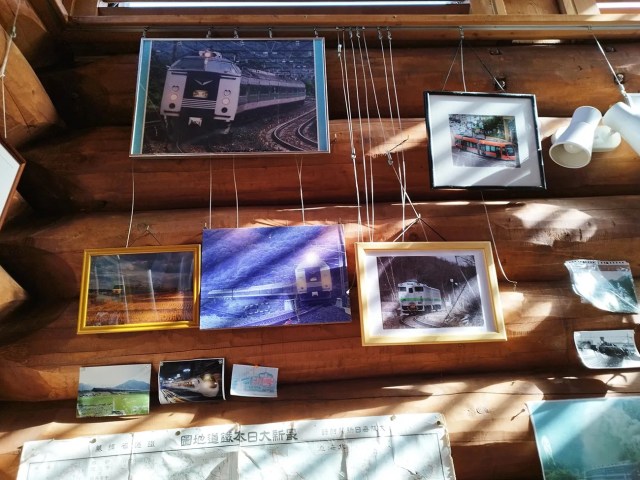













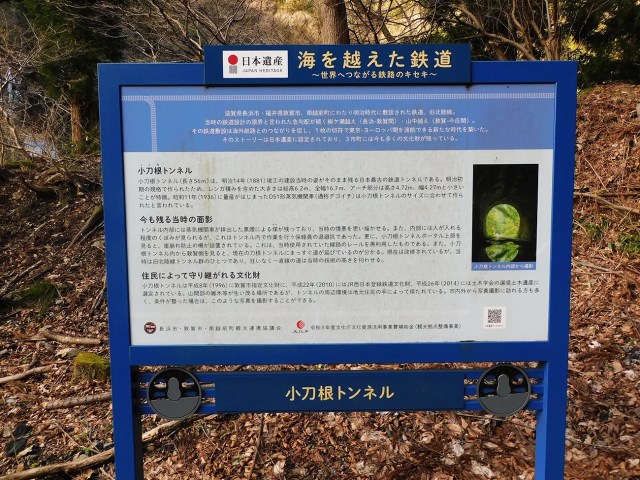
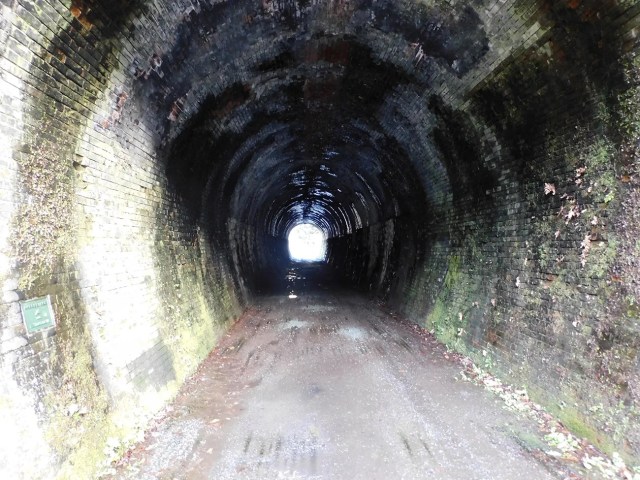


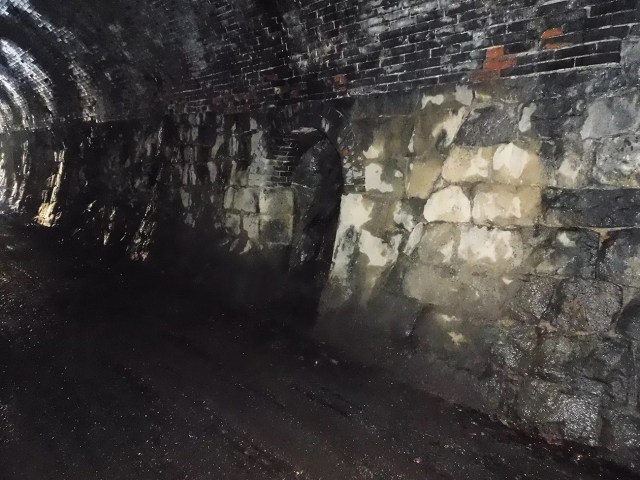




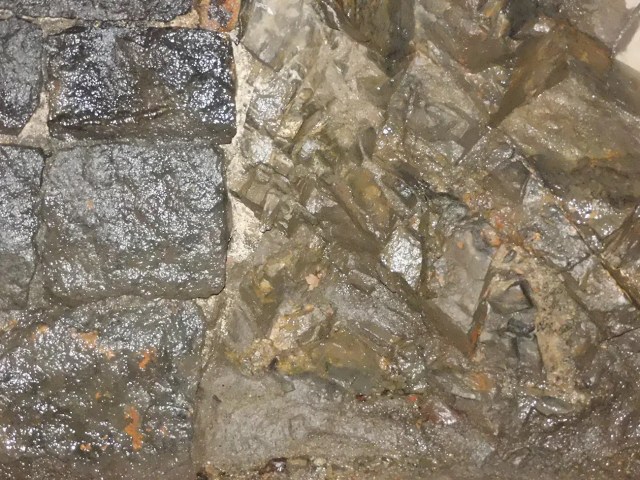

 Japanese hand-dug tunnels on a bamboo forest trail are like a quest in a video game
Japanese hand-dug tunnels on a bamboo forest trail are like a quest in a video game We deeply regret going into this tunnel on our walk in the mountains of Japan
We deeply regret going into this tunnel on our walk in the mountains of Japan Doai Station: The deepest station in Japan is also one of the scariest, like a video game dungeon
Doai Station: The deepest station in Japan is also one of the scariest, like a video game dungeon We travel to Gohoro Station, a tiny, remote station between tunnels in the mountains of Hokkaido
We travel to Gohoro Station, a tiny, remote station between tunnels in the mountains of Hokkaido Japan’s robot dinosaur population continues to grow with new addition at Fukui Station
Japan’s robot dinosaur population continues to grow with new addition at Fukui Station We revisited Sweets Paradise after a decade to see if Japan’s dessert buffet still delivers
We revisited Sweets Paradise after a decade to see if Japan’s dessert buffet still delivers Hayao Miyazaki says Happy New Year to Studio Ghibli fans with new art for Year of the Horse
Hayao Miyazaki says Happy New Year to Studio Ghibli fans with new art for Year of the Horse “Moe temple” in Tokyo to woo anime geeks with maid cafe
“Moe temple” in Tokyo to woo anime geeks with maid cafe Rental grandma service growing in Japan, can help cook or break up with boyfriends
Rental grandma service growing in Japan, can help cook or break up with boyfriends Starbucks Japan ready to get Year of the Horse started with adorable drinkware and plushies【Pics】
Starbucks Japan ready to get Year of the Horse started with adorable drinkware and plushies【Pics】 Restaurant in Asakusa offers up itty-bitty sushi made with just a single grain of rice!
Restaurant in Asakusa offers up itty-bitty sushi made with just a single grain of rice! Is it possible to run up a 100,000-yen (US$885) bill at Tokyo’s cheapest Italian restaurant?
Is it possible to run up a 100,000-yen (US$885) bill at Tokyo’s cheapest Italian restaurant? Japanese group to hold fashion show of colostomy bags and other stoma equipment in Paris
Japanese group to hold fashion show of colostomy bags and other stoma equipment in Paris Tokyo’s Shinjuku is looking very different with its giant westside skyscraper torn down【Photos】
Tokyo’s Shinjuku is looking very different with its giant westside skyscraper torn down【Photos】 “Denki Anma”: The Japanese traditional torment that you’ll be glad stays in Japan
“Denki Anma”: The Japanese traditional torment that you’ll be glad stays in Japan Cyberpunk anime meets traditional culture in Ghost in the Shell gold leaf Japanese changing screens
Cyberpunk anime meets traditional culture in Ghost in the Shell gold leaf Japanese changing screens 7 great places to see Mt. Fuji from without having to climb it
7 great places to see Mt. Fuji from without having to climb it Hello Kitty Choco Egg figures are an adorable trip through three periods of Japanese pop culture【Pics】
Hello Kitty Choco Egg figures are an adorable trip through three periods of Japanese pop culture【Pics】 7-Eleven Japan’s ramen-cooking robot whipped us up a bowl of noodles【Taste test】
7-Eleven Japan’s ramen-cooking robot whipped us up a bowl of noodles【Taste test】 We found possibly the quietest Japanese-style hotel in Tokyo’s bustling Shinjuku district
We found possibly the quietest Japanese-style hotel in Tokyo’s bustling Shinjuku district Japan’s otoshidama tradition of giving kids money at New Year’s gets a social welfare upgrade
Japan’s otoshidama tradition of giving kids money at New Year’s gets a social welfare upgrade Sumo Sanrio! Hello Kitty and pals team up with Japan Sumo Association for new merch【Pics】
Sumo Sanrio! Hello Kitty and pals team up with Japan Sumo Association for new merch【Pics】 More Than a Capsule Stay: Why Solo Travelers Choose “global cabin Yokohama Chinatown”
More Than a Capsule Stay: Why Solo Travelers Choose “global cabin Yokohama Chinatown” Japan’s oldest largetooth sawfish in captivity back on display in Mie Prefecture
Japan’s oldest largetooth sawfish in captivity back on display in Mie Prefecture 7-Eleven Japan starts new temporary luggage storage service in over 300 branches
7-Eleven Japan starts new temporary luggage storage service in over 300 branches Disillusionment at Tsukiji’s tourist-target prices led us to a great ramen restaurant in Tokyo
Disillusionment at Tsukiji’s tourist-target prices led us to a great ramen restaurant in Tokyo Starbucks teams up with 166-year-old Kyoto doll maker for Year of the Horse decorations【Photos】
Starbucks teams up with 166-year-old Kyoto doll maker for Year of the Horse decorations【Photos】 Tokyo considering law requiring more trash cans following litter increase in heavily touristed area
Tokyo considering law requiring more trash cans following litter increase in heavily touristed area Tokyo’s Tsukiji sushi neighborhood asks tour groups to stay away for the rest of the month
Tokyo’s Tsukiji sushi neighborhood asks tour groups to stay away for the rest of the month Tokyo event lets you travel back in time, for free, to celebrate 100 years since Showa era start
Tokyo event lets you travel back in time, for free, to celebrate 100 years since Showa era start Sanrio theme park in Japan announces plans to expand into a Sanrio resort
Sanrio theme park in Japan announces plans to expand into a Sanrio resort Japan may add Japanese language proficiency, lifestyle classes to permanent foreign resident requirements
Japan may add Japanese language proficiency, lifestyle classes to permanent foreign resident requirements Stamina-destroying “Paralysis Noodles” are Tokyo’s newest over-the-top ramen innovation
Stamina-destroying “Paralysis Noodles” are Tokyo’s newest over-the-top ramen innovation Survey asks foreign tourists what bothered them in Japan, more than half gave same answer
Survey asks foreign tourists what bothered them in Japan, more than half gave same answer Japan’s human washing machines will go on sale to general public, demos to be held in Tokyo
Japan’s human washing machines will go on sale to general public, demos to be held in Tokyo Japan’s deadliest food claims more victims, but why do people keep eating it for New Year’s?
Japan’s deadliest food claims more victims, but why do people keep eating it for New Year’s? We deeply regret going into this tunnel on our walk in the mountains of Japan
We deeply regret going into this tunnel on our walk in the mountains of Japan Studio Ghibli releases Kodama forest spirits from Princess Mononoke to light up your home
Studio Ghibli releases Kodama forest spirits from Princess Mononoke to light up your home Major Japanese hotel chain says reservations via overseas booking sites may not be valid
Major Japanese hotel chain says reservations via overseas booking sites may not be valid Put sesame oil in your coffee? Japanese maker says it’s the best way to start your day【Taste test】
Put sesame oil in your coffee? Japanese maker says it’s the best way to start your day【Taste test】 No more using real katana for tourism activities, Japan’s National Police Agency says
No more using real katana for tourism activities, Japan’s National Police Agency says Starbucks Japan reveals new sakura drinkware collection, inspired by evening cherry blossoms
Starbucks Japan reveals new sakura drinkware collection, inspired by evening cherry blossoms Updated cherry blossom forecast shows extra-long sakura season for Japan this year
Updated cherry blossom forecast shows extra-long sakura season for Japan this year Ride bikes on an abandoned railway line at this hidden tourist spot in Japan
Ride bikes on an abandoned railway line at this hidden tourist spot in Japan
Leave a Reply